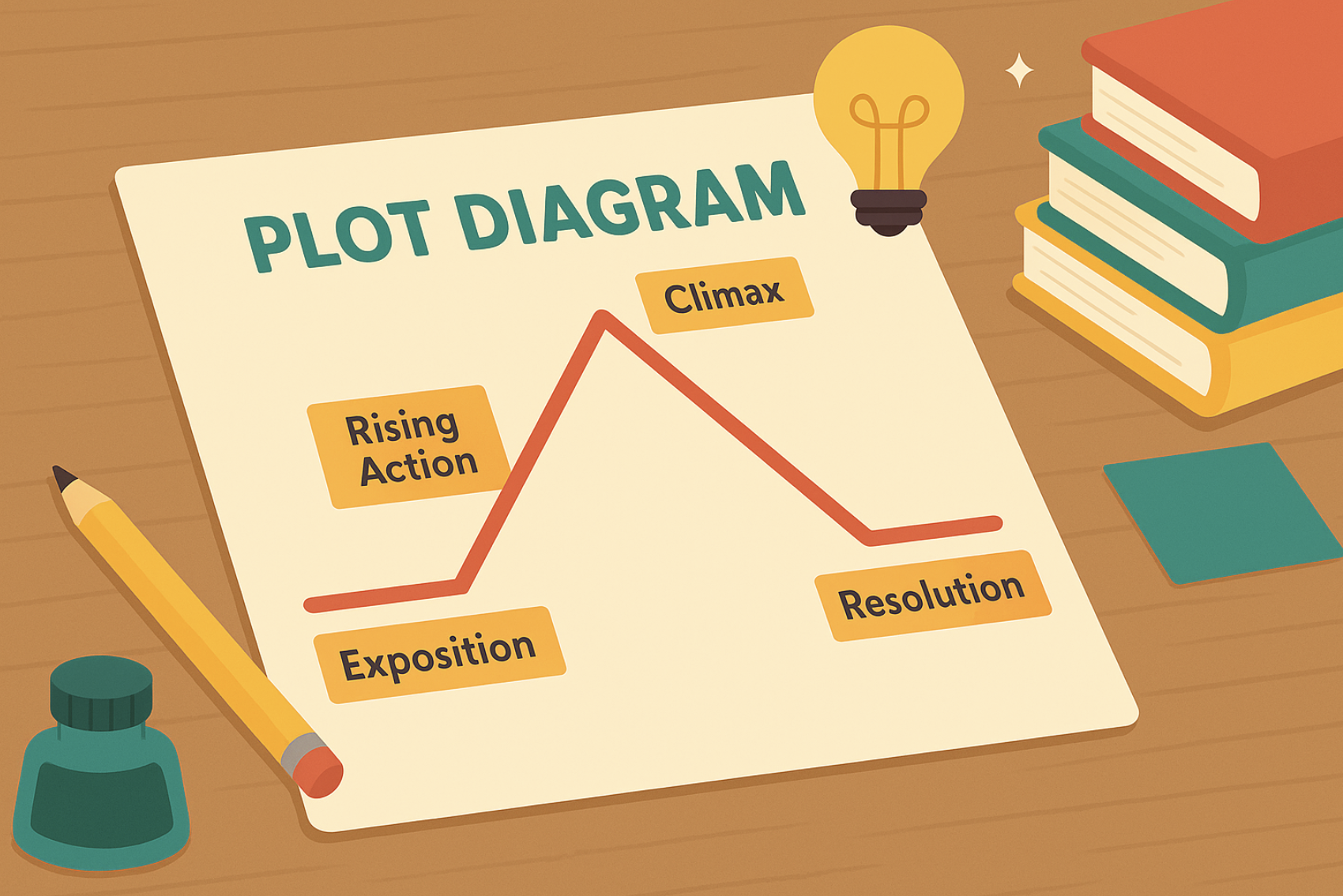“Give me a room full of monologues, and I’ll show you a room full of stories waiting to be told.” — Okay, I just made that up, but you get the idea. Monologues have a magical way of stealing the spotlight. Whether on the stage, in a film, or even in the privacy of your own mind, a well-crafted monologue can carry an entire story on its shoulders. It’s that moment when a single voice takes over, pulling you into a whirlwind of emotion, drama, or deep reflection.
Monologues have the power to reveal character, expose hidden desires, and elevate an ordinary narrative to something unforgettable. In a play, a dramatic monologue gives insight into a character’s soul; in a movie, it can leave audiences on the edge of their seats. And let’s not forget the internal monologue—the quiet but often explosive thoughts swirling around in the back of our minds.
For aspiring writers and performers, understanding these monologue examples—from dramatic and internal monologues to iconic monologues from movies—is a must. These examples offer invaluable lessons on pacing, timing, and how a single voice can transform a scene. Whether you’re writing for stage or screen or just trying to channel your inner character, studying how to write a monologue will give you the tools to make your words truly resonate. So, let’s dive into why these monologues matter and how you can master them.
Dramatic Monologue Examples: When Words Become Weapons
A dramatic monologue is like a one-person show wrapped in a single speech. In literature and theater, it’s a moment when a character, often alone on stage (or in the spotlight of their own thoughts), delivers an impassioned speech that reveals more than just the surface story. It unveils their innermost emotions, desires, and often a glimpse of their worldview. Think of it as a character spilling their soul, whether they mean to or not.
At its core, a dramatic monologue is all about revealing a character’s emotional depth and internal struggle through the power of their words. It’s an art form that allows a writer to use language as a weapon, making every word cut deeper than the last. The character might be reflecting on their life, confessing a secret, or making a pivotal decision. But whatever the context, these speeches have the power to move the plot forward and shake the audience to its core.
Famous Dramatic Monologue Examples
Famous dramatic monologue examples are abundant in both classical and modern works. One of the most iconic is Hamlet’s “To be or not to be” soliloquy from Shakespeare’s Hamlet. In this moment, Hamlet grapples with the meaning of life and death, and through his contemplation, we’re given a window into his tortured mind. Shakespeare uses the monologue not only to reveal Hamlet’s internal conflict but also to reflect broader themes of existence, morality, and the human condition. It’s a quintessential example of how a dramatic monologue can elevate the narrative.
Another powerful example comes from The Great Gatsby by F. Scott Fitzgerald, where Gatsby’s monologue about his longing for Daisy encapsulates his obsession, love, and the tragic nature of his pursuit. This speech helps to cement the theme of unattainable dreams and the impossibility of recapturing the past.
So why does it work? Dramatic monologues captivate because they give the audience an intimate look at a character’s psyche. We’re not just spectators to the action; we’re invited into the character’s thoughts and emotions. These moments of raw vulnerability create an emotional connection, making us care about what happens next. Whether a character is spilling their heart out or unraveling in front of us, their words can move us to tears, laughter, or even a profound sense of discomfort.
Through dramatic monologue examples, we see how words can hold the power of a thousand actions—capturing the essence of a character and, often, the heart of a play or novel.
Your Publishing Journey Awaits – Start NowInternal Monologue Examples: The Battle in Your Head
An internal monologue is the quiet (or not-so-quiet) conversation that happens inside a character’s mind. It’s the dialogue they have with themselves, full of thoughts, doubts, desires, and sometimes outright chaos. This internal dialogue lets readers or viewers peer into the character’s psyche, uncovering their true feelings and motivations—things they might never say out loud.
Internal monologue examples are crucial for building deep, complex characters. They allow us to hear what a character isn’t saying, showing us their internal struggles, fears, and hopes. This gives them a rich layer of complexity that external actions alone can’t convey.
Famous Internal Monologue Examples
In J.D. Salinger’s The Catcher in the Rye, Holden Caulfield’s internal monologues reveal his disillusionment with the world around him. His cynical, often contradictory thoughts provide a window into his troubled mind. Similarly, in Virginia Woolf’s Mrs. Dalloway, the internal monologues of Clarissa Dalloway and other characters unfold their inner turmoil and reflections on life, time, and relationships.
Why does this technique work so well? Internal monologues create an intimate connection between the audience and the character. We become privy to their innermost thoughts, and this vulnerability drives the story forward, providing insight that shapes their actions and decisions. In essence, internal monologue examples help make characters feel more human, making us care more deeply about their journeys.
Examples of Monologue: The Power of One Voice
A monologue is any extended speech delivered by a single character, and it has the power to shape stories across all mediums. Whether it’s a fiery political speech, a heartfelt soliloquy in a play, or a personal narrative shared online, the monologue allows one voice to dominate the scene, conveying a character’s deepest thoughts, beliefs, or desires.
Monologues can take many forms. Think of Martin Luther King Jr.’s “I Have a Dream” speech, which inspired millions with its vision for equality. In literature, Hamlet’s iconic soliloquy asks fundamental questions about life and death. In film, monologues like Robin Williams’ “Good Will Hunting” speech leave lasting (and sometimes heartbreaking) impressions on audiences. Today, monologues even appear in social media as personal vlogs or confession-style posts, where individuals share their inner thoughts with the world.
These monologue examples show how this powerful storytelling tool allows one voice to speak volumes, leaving a lasting impact on listeners and readers alike.
Monologue Examples from Movies: Hollywood’s Spotlight on the Solo
In the world of film, monologue examples from movies are more than just speeches—they are pivotal moments that often define a character or even a film. These monologues allow actors to pour their hearts out, delivering emotions that words alone can’t capture. It’s in these moments that audiences truly connect with a character’s struggles, desires, or triumphs.
Take Al Pacino’s powerful speech in Scent of a Woman, where his character, Lieutenant Colonel Frank Slade, delivers an impassioned monologue about living life with intensity and purpose. Or Jack Nicholson’s iconic outburst in A Few Good Men, where his “You can’t handle the truth!” line becomes a defining moment of the film. These examples from movies show how a single scene can leave an emotional imprint on audiences.
The reason they work so well? A well-timed monologue gives an actor the chance to elevate a story and stir deep emotions, creating a moment that sticks long after the credits roll.
How to Write a Monologue: Crafting Your Masterpiece
Writing a compelling monologue is an art form that requires more than just words—it’s about capturing a character’s essence and emotions in a single speech. To craft a truly gripping monologue, focus on a few key elements: voice, pacing, stakes, and emotional depth. The voice should feel authentic to the character, the pacing should keep the audience engaged, and the stakes need to be high enough to make the monologue matter. Emotional depth is what will make your words resonate. For those looking for how to write a monologue examples, these tips will help guide you as you craft something that resonates and leaves a lasting impact.
Steps to Writing a Monologue:
- Understand Your Character: Know their motivations, fears, and desires. What drives them to speak?
- Set the Scene: Where is the monologue happening? The environment can influence the mood and intensity of the speech.
- Build Tension: Gradually raise the stakes—monologues work best when the character’s emotions or situation evolve as they speak.
Look to monologue examples from classics like Lady Macbeth’s soliloquy or Blanche DuBois’ breakdown in A Streetcar Named Desire. These speeches show how building emotional tension and reflecting a character’s inner turmoil can create something unforgettable.
Tips and Tricks:
- Keep it tight: Avoid rambling—every word should count.
- Use pauses for impact: A well-timed pause can add dramatic weight.
- Don’t overexplain: Trust your audience to understand without spelling everything out.
Bring Your Monologue to Life
Mastering the art of the monologue—whether it’s dramatic, internal, or straight from the big screen—can elevate your storytelling to new heights. As we’ve seen from iconic monologue examples, these speeches have the power to reveal deep character emotions, drive the narrative, and leave a lasting impression on the audience.
Now it’s your turn! Take the examples discussed here as inspiration and start writing and performing your own monologues. Whether you’re creating something for the stage, screen, or simply for practice, the more you dive into the process, the stronger your monologue skills will become.
Remember, words have power. A great monologue can change the direction of a story and sometimes even change the world. So go ahead—let your voice be heard.
FAQs – Monologue Examples
Q1: How should I start my monologue?
To start your monologue, dive straight into the character’s mindset. Begin with a strong emotional hook—whether it’s a thought, question, or revelation that immediately grabs attention. You could start with a dramatic statement, a rhetorical question, or even an inner conflict. The key is to establish the tone and give the audience a glimpse of what’s at stake right from the beginning. Make them want to listen!
Q2: How long should a monologue be?
Monologues typically range from 1 to 3 minutes in length, depending on the context. For performances, aim for around 1-2 minutes to maintain impact and engagement. In writing, a monologue can be longer, but it should still focus on building tension and emotional depth without losing the audience’s attention.
Q3: What is the difference between a monologue and a soliloquy?
A monologue is a long speech delivered by one character, often to other characters or an audience. It can occur in any situation. A soliloquy, on the other hand, is a specific type of monologue where the character speaks to themselves, revealing their inner thoughts, usually when no one else is around. Soliloquies are common in Shakespearean plays, like Hamlet’s famous “To be or not to be.”
Q4: What three things must a monologue have?
A clear purpose: The character should have a reason for speaking—whether it’s to express emotion, reveal secrets, or make a decision.
Conflict or tension: A great monologue often arises from an internal or external struggle.
Emotional depth: The character’s emotions should drive the monologue, making it relatable and compelling.
Q5: What are some good monologue topics?
Good monologue topics often reflect deep emotional or intellectual conflict. Here are a few ideas:
A person reflecting on a pivotal life decision (e.g., quitting a job, moving away)
Someone confronting a personal fear or desire
A character expressing unspoken love or regret
A political speech or call for change
A moral dilemma or an ethical confession
Q6: What is the difference between a dialogue and a monologue?
A dialogue is a conversation between two or more characters, where both interact and share ideas. A monologue, however, involves one character speaking for an extended period, either to themselves, to another character, or to an audience. Monologues reveal a character’s inner thoughts, emotions, or a pivotal moment, while dialogues focus on the exchange of ideas and information between multiple characters.








